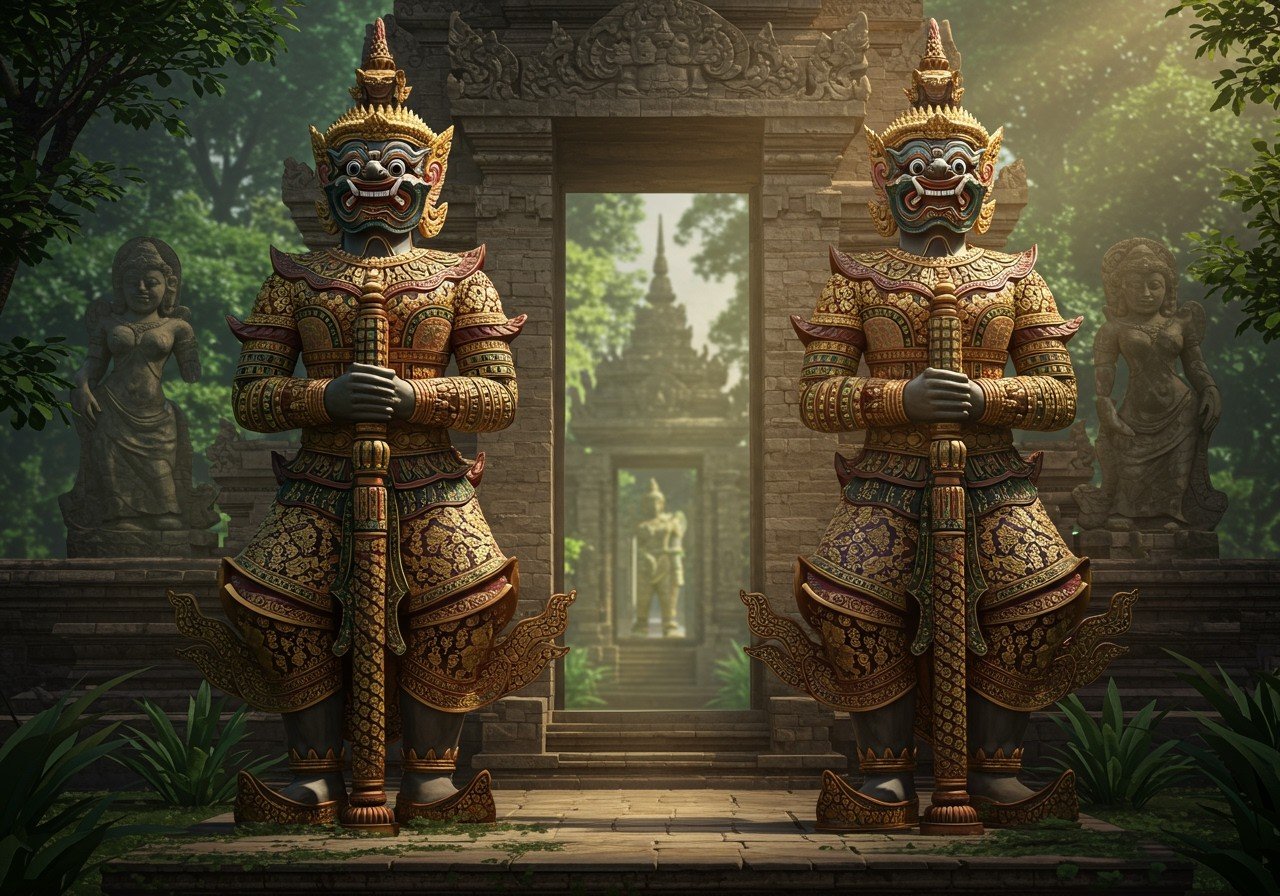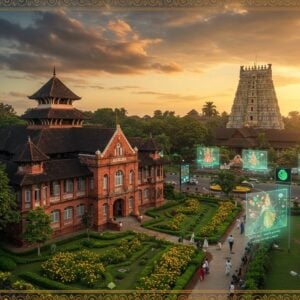
Imagine approaching a magnificent temple, the air thick with incense and the sound of chanting. At the entrance, two imposing figures stand guard, their expressions fierce yet serene. These are the Dvarapalas, the silent guardians of sacred spaces, a cornerstone of Southeast Asian temple architecture.
For those of us deeply rooted in Indian traditions, the sight of Dvarapalas evokes a sense of connection to our rich spiritual heritage. They represent more than just protection; they embody the values of guardianship, strength, and vigilance that are so deeply ingrained in our culture. Their presence at temple entrances creates a tangible boundary between the mundane and the divine, a reminder of the sanctity within.

Guardians of the Divine: Exploring the Cultural Significance of Dvarapalas
Across Southeast Asia, from the majestic temples of Bali to the ancient ruins of Angkor, Dvarapalas stand sentinel, each with a unique story to tell. Their imposing figures, often adorned with elaborate attire and wielding symbolic weapons, embody the strength and vigilance required to protect sacred spaces from negative energies. Let’s delve deeper into their rich symbolism:
- Protection against negativity: Dvarapalas are more than just statues; they are believed to actively ward off evil spirits and negative influences, safeguarding the sanctity of the temple and those within. They act as a spiritual shield, ensuring that the sacred space remains pure and conducive to prayer and worship.
- Guardians of our values: The very presence of Dvarapalas reinforces the cultural importance of protecting our spiritual heritage. Their stern expressions and powerful stances speak volumes about the reverence we hold for these sacred spaces. They are a tangible representation of our commitment to preserving tradition.
- Strength and vigilance personified: Often depicted with muscular physiques and watchful eyes, Dvarapalas embody strength and unwavering vigilance. This serves as a constant reminder of the need to remain steadfast in our faith and protect our spiritual well-being.
- A bridge to the divine: In some traditions, Dvarapalas are associated with specific deities or spiritual guardians. This connection to the divine further enhances their protective power and reinforces their role as intermediaries between the human and spiritual realms.
- Threads of cultural connection: The presence of Dvarapalas across different cultures, from India to Java, highlights the interconnectedness of our spiritual traditions. While their appearance may vary based on local influences, their fundamental role as protectors remains constant.
- Local flavors, unique expressions: Just as our traditions vary across regions, so too do the depictions of Dvarapalas. From the fearsome demonic figures of Indonesia to the more human-like forms in Khmer architecture, these local variations reflect the richness and diversity of our shared heritage.
A Journey Through Regional Variations: Dvarapalas Across Southeast Asia
The beauty of Dvarapalas lies in their regional diversity. While their core purpose remains the same, their appearance and the specific myths surrounding them vary considerably, offering a glimpse into the rich tapestry of Southeast Asian culture. Let’s explore some of these regional variations:
Bali: Where Tradition Meets Art
In Bali, Dvarapalas are integral to the island’s unique blend of Hinduism and local traditions. Intricately carved and often brightly painted, they reflect the island’s vibrant artistic heritage. Temples like Pura Besakih, Bali’s mother temple, showcase magnificent Dvarapalas, their presence adding to the spiritual aura of these sacred sites.
Cambodia: Echoes of the Khmer Empire
The ancient temples of Angkor, remnants of the mighty Khmer Empire, bear witness to the evolution of Dvarapala iconography. Here, the guardians often display both Hindu and Buddhist influences, reflecting the complex religious history of the region. Preservation efforts are crucial to ensuring that these magnificent figures continue to inspire awe and reverence for generations to come.
Thailand: Guardians of Buddhist Sanctuaries
In Thailand, Dvarapalas grace the entrances of Buddhist temples, their presence a symbol of protection and spiritual guardianship. Often intricately decorated with gold leaf and vibrant colors, they embody the reverence that Thais hold for their religious traditions.

Bring Home the Blessings: Dvarapalas and More at Poojn.in
At Poojn.in, we understand the deep cultural and spiritual significance of Dvarapalas. We offer a curated selection of culturally significant items, including statues and depictions of these majestic guardians, allowing you to bring their protective energy into your home. Explore our collection and discover other sacred items that resonate with your faith and traditions.
Enhance your spiritual practice with these related offerings:
- Bhagwan Ka Shringar: Adorn your deities with beautiful shringar items and create a sacred atmosphere in your home.
- Pooja Kits: Simplify your rituals with our comprehensive pooja kits, containing everything you need for a fulfilling spiritual experience.
Visit Poojn.in today!
Connecting with Our Heritage: The Enduring Legacy of the Dvarapalas
Dvarapalas are more than just guardians of temples; they are guardians of our shared heritage. They embody the values, beliefs, and traditions that have shaped our cultural identity for centuries. By appreciating their significance, we honor our ancestors and ensure that their legacy continues to inspire future generations. At Poojn.in, we are committed to providing you with authentic and high-quality ritual items that connect you with your spiritual roots.


